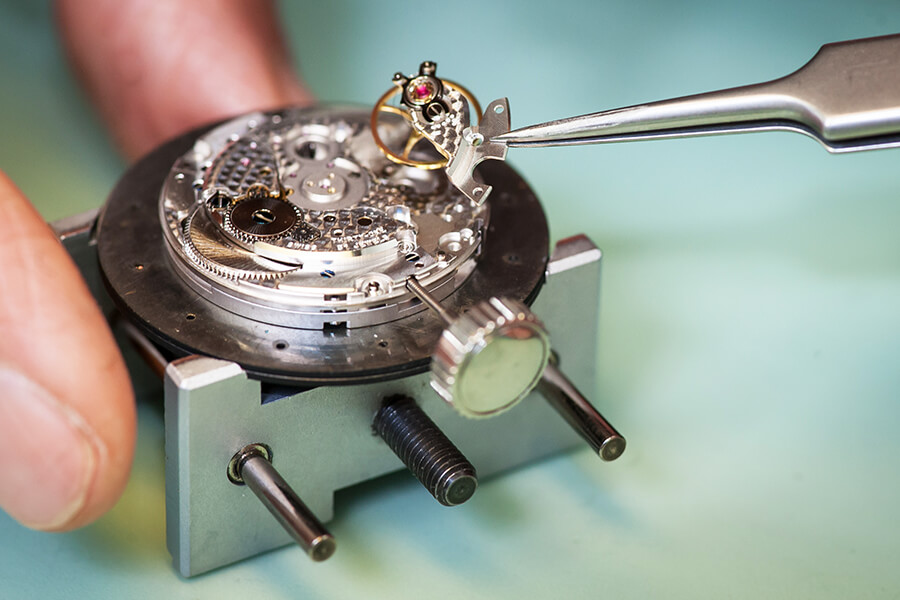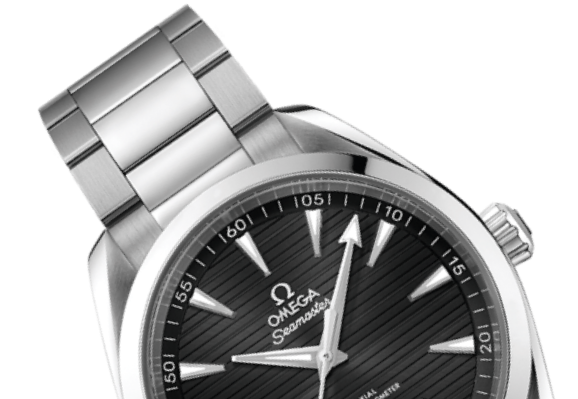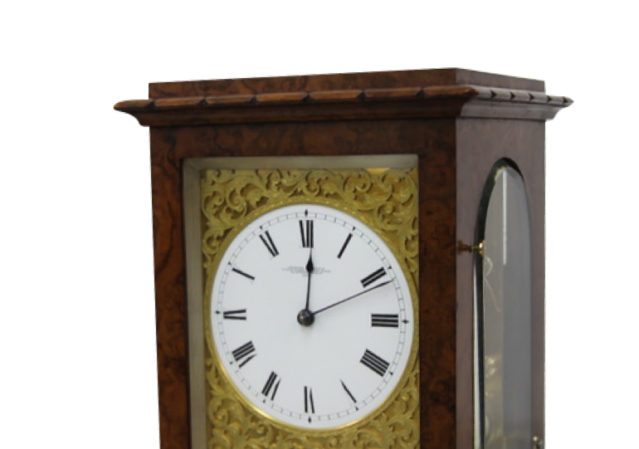If you come to Garrick Michlmayr to have your watch refurbished, the first thing we will do is discuss it with you. This conversation is important if we are to understand your wants and needs but also so that we can give you our honest opinion on what’s best for your watch. Any watch that you are considering having refurbished will have imperfections and you might want those left untouched for sentimental or aesthetic reasons. We might also advise you to leave some elements unrestored to maintain the value or integrity of an older piece. However you want your watch to be restored, we aim to enhance the features that make it one of a kind and in this blog we will take you through the reconditioning journey, from preparation to final polish.
An Insight into the Journey.
The components inside a watch may be small and intricate, but our workshops have to be big enough to accommodate separate rooms for each step of the refurbishment process. Each of the main steps; cleaning, gritting and polishing, requires a specialist environment and equipment to achieve optimum results for our customers and we have all of those facilities on site.
Initial Preparation.
If we are overhauling your watch, the first step for our watchmakers is to prepare it to a degree that suits the job at hand. When there are mechanical repairs to be tackled, this will involve dismantling the watch entirely, removing each of the dozens of tiny components. Before cleaning can begin, we protect any parts that we want to exclude from the process. This allows us to work with absolute precision during the treatment, ensuring that any cleaners, polishes, or grit will not contaminate or scratch parts that we want to leave untouched. Throughout every stage of the process, specialised finger gloves are worn and tweezers are used to prevent the contamination of parts through human touch.
Cleaning Room
The cleaning of a watch is a very intricate process involving specialized machinery to remove any surface dirt and dust. At this stage it is imperative that all contaminants and oil residue are removed from the mechanical movement.
We use special tanks for cleaning watch cases and parts and a combination of ultrasonic bath soaks and cleaning fluids. Having been dismantled, the movement parts are subjected to different chemical processes to clean and degrease them before they are rinsed three times leaving them thoroughly and spotlessly clean.
When we put a watch case or bracelet into an ultrasonic tank, the sound waves that the tank makes cause a vibration creating air bubbles on the surface of the metal and lifting the dirt away. As with the movement parts, this process is completed using three rinse jars for perfect cleanliness.
Gritting Room
To put a grained or grit finish on a watch, we use a specialist machine with different settings for specific watch brands and models. For example, we can set the machine to work at different depths, angles and even different circumferences to achieve the desired look. If your watch is a little more special and the machine doesn’t have a setting for it, we can add the grit finish by hand with buff sticks to achieve the proper effect. After the graining and gritting has been completed, we clean the watch again, ensuring that no grit or dust remains that could cause damage during the next stage of the process.
Polishing Room
The polishing room is dedicated to case finishing, which can get a little messy, and this is why we do it in a vacuum-like chamber away from the other parts of the workshop. We use specific cloth mops to finish the cases and polish them in a variety of different ways to achieve the desired effect. Case polishing can be very time-consuming, as it is imperative to clean the case after each stage of the process if we are to replicate a factory finish and return the shine to your watch.
While this three stage process may seem complicated, your watch is a complicated instrument and cleaning of this nature should be carried out regularly in order to ensure that your watch functions properly and that metallic parts do not discolour. Not having your mechanical watch thoroughly cleaned can result in a build-up of debris, causing degradation of the metal and mechanical malfunction. Consequently we recommend that you refurbish your watch every four to five years to ensure that it works as intended for many years to come.
If you have a watch in need of a watch refurbishment, we would be more than happy to discuss it and advise on what we feel is best for you. Email us on admin@michlmayr.com or give us a call on 01603 403687 to start your restoration journey today.


